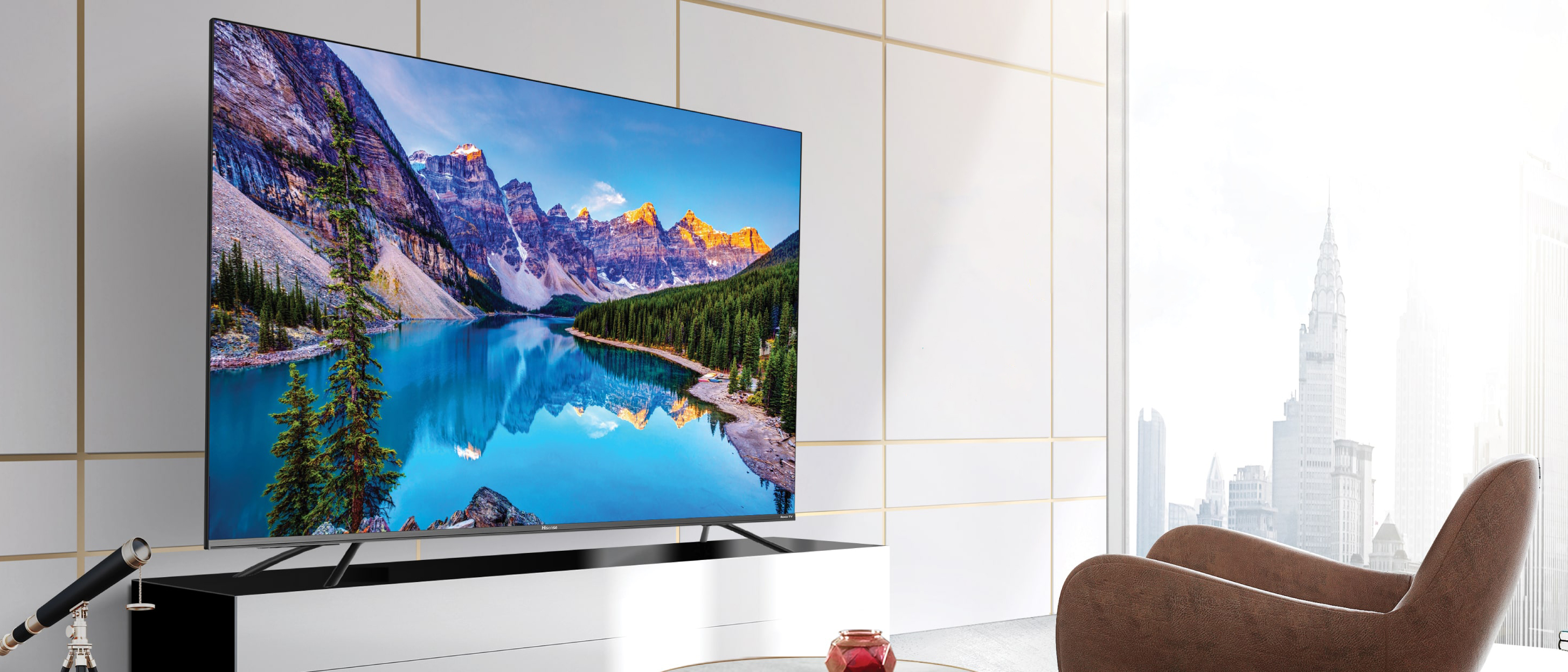Tom's Guide Verdict
Boasting a quality picture, a user-friendly Roku smart interface, and impressive gaming capabilities, the Hisense R8F Roku TV is a tempting TV for its price.
Pros
- +
Affordable
- +
Good picture quality and SDR color accuracy
- +
Low input lag
- +
Convenient Roku integration
Cons
- -
Excessive light bloom
- -
Unexceptional sound
- -
Weak off-angle viewing
Why you can trust Tom's Guide
Model number: 65R8F
Price: $699.99
Screen size: 64.5 inches
Resolution: 3840 x 2160
HDR: Dolby Vision and HDR10
Refresh rate: 60 Hz
Ports: 4 HDMI 2.0b
Audio: 15 watts x 2, w/ Dolby Atmos
Smart TV software: Roku
Size: 56.9 x 32.8 x 3 inches [w/o stand]
Weight: 43 pounds [w/o stand]
You don’t need to sacrifice all the features and picture quality of the best TVs if your bank account isn’t exactly bulging. If you’re in the market for a 4K set that delivers some solid wins but doesn’t break the $700 price barrier, you may not need to look further than the Hisense R8F series.
Armed with a bevy of intuitive smart features buoyed by the ubiquitous Roku technology and turning out a fine picture for the price, the R8F series is a more-than-respectable entry in the midrange TV realm. It’s not perfect—there’s some hyperactive light bloom and audio is just so-so—but considering how little it costs, there’s not much to complain about.
Hisense R8F Roku TV review: Price and availability
For our review, we assessed the 65-inch version of the Hisense R8F Roku TV, the 65R8F. The set is also available in a 55-inch model (the 55R8F), which shares many of the same core features but has only 56 dimming zones (compared with the 65R8F’s 60). For that reason, we expect the performance of both versions to be comparable, and our recommendations for the 65R8F may also apply to the smaller set.
55 inches: Hisense 4K 55R8F - $449.99
65 inches: Hisense 4K 65R8F - $649.99
Hisense R8F Roku TV review: Design
With an understated, unassuming design, the R8F should have no trouble fitting into any décor. Bezels on the top and sides are thin (about 0.2 inch) and black; the one on the bottom is half an inch thicker and colored gunmetal gray, matching the two feet that connect to it on the bottom of either side.
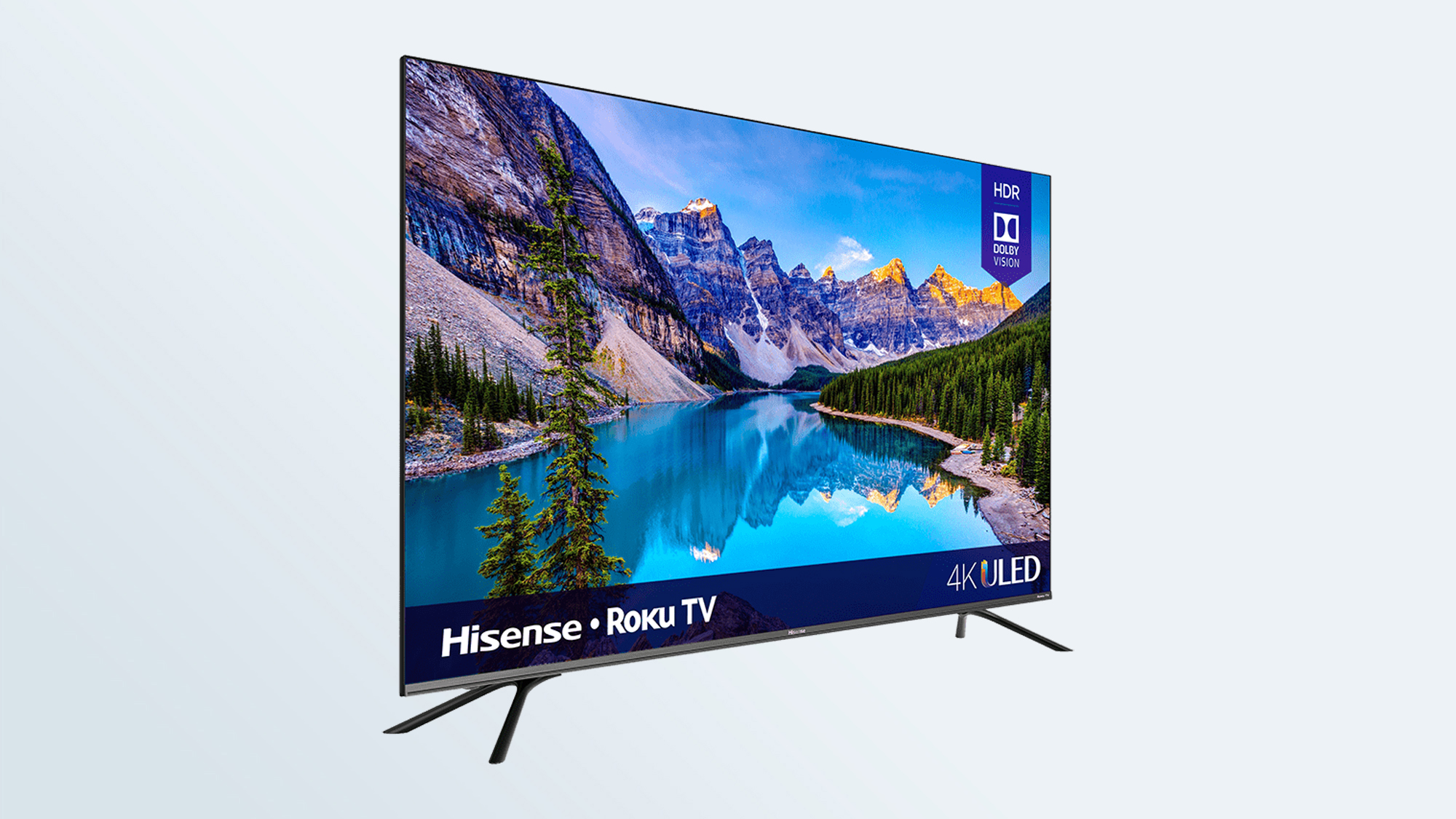
Weighing in at 43 pounds, the R8F isn’t unduly heavy (though, as always, you’re better off getting someone to help you haul it into position).

The back panel is also all black, and largely featureless, with a ridge near the top being the only significant adornment beyond the holes for affixing the TV to a 400 x 200 millimeter VESA mount. Keep in mind, though, that as the TV measures 3 inches at its thickest point, the TV will jut out a bit from the wall if you go that route.
Hisense R8F Roku TV review: Ports
On the right side of the R8F is the jack for connecting the power cord. All the other key ports are the left: Audio Out, USB, three HDMI, Headphone, and coaxial all angled toward the outer edge, along with a Reset button; and, facing straight out, composite audio and video, Line Out, a fourth HDMI port, and Ethernet. If you’d prefer to connect your TV to the Internet via Wi-Fi, the R8F supports standards up to 802.11ac.
Hisense R8F Roku TV review: Performance
For a sub-$700 TV, the R8F delivers above-average picture quality that’s particularly noticeable in its handling of color. The fairytale-pastel palette of Disney’s Onward, for example, really pops, with the abundant purples of the lead elven characters’ skins contrasting nicely with the deeper greens and more muted earth tones of their rugged adventure environment. Spider-Man: Into the Spider-Verse, boasting a very different kind of animation, looks better still, with its comics-inspired hues and sharp character outlines partnering perfectly with the percussive excitement of that film’s near-nonstop motion.
We used an XRite i1 Pro 2 spectrophotometer, a SpectraCal VideoForge Pro pattern generator, and CalMAN Ultimate calibration software to take more precise measurements and get a more objective look at what the R8F can do. Its Normal mode covers upwards of 99.9% of the Rec. 709 color space, compared with 99.42% for Movie mode. That’s better than what you’ll see with the highly capable Vizio M-Series Quantum (M658-G1) and the TCL 6-Series Roku TV R625 review in the equivalent modes (up to 95.45% and 95.31%, respectively), though both TVs hold their own in their versions of Normal mode, with the Vizio covering a full 99.92% and the TCL 99.96%.
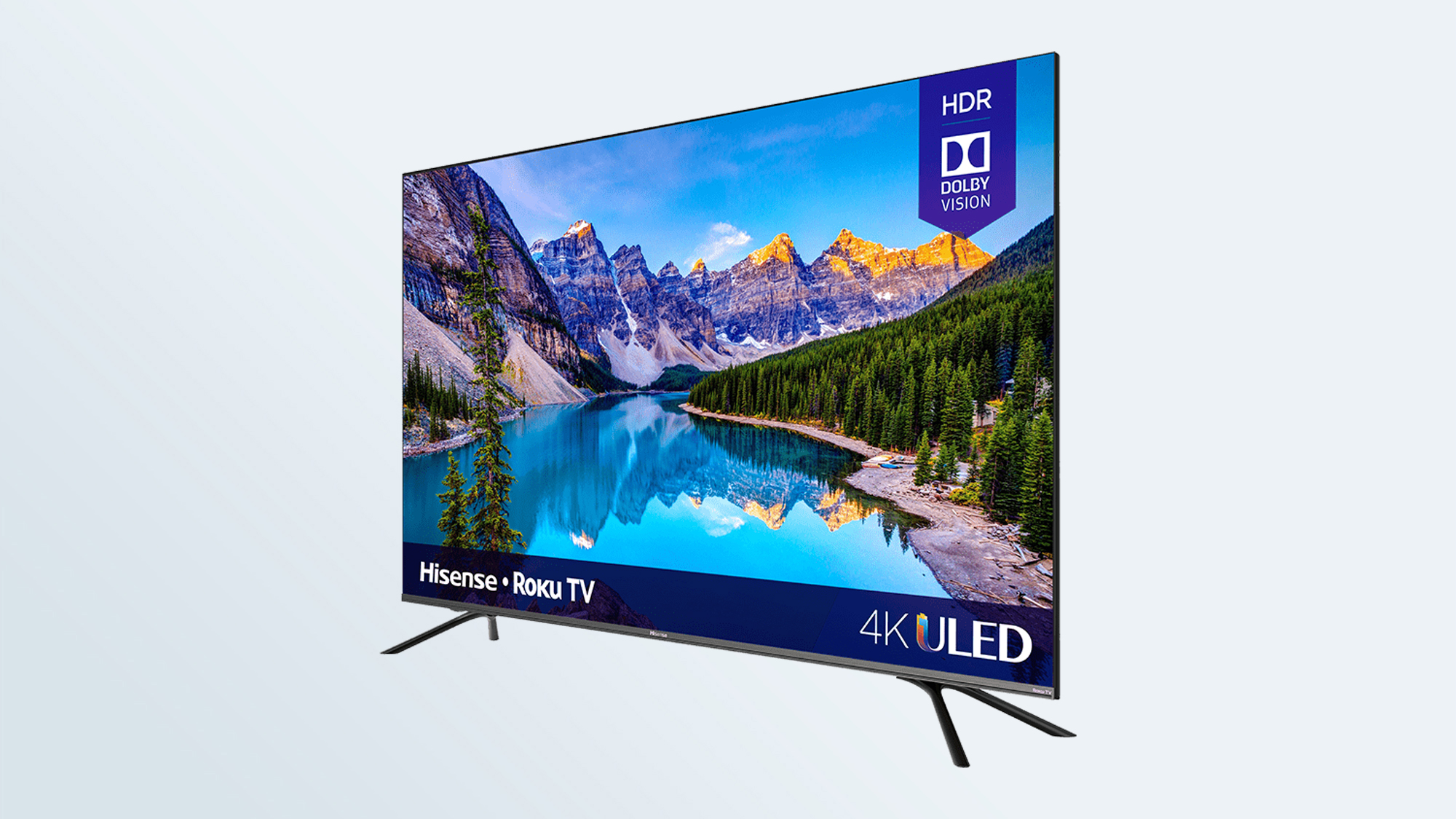
You’ll see accurate colors on the R8F, too, particularly in Movie mode. The set’s rating for Delta E, which relates the difference between the input color and the displayed color (with lower values better), is 2.4. This is well below the Vizio M-Series Quantum (3.6), though a smidgen above the TCL (2.2); in any event, it’s a good result for a TV at this price.
The colors stray a bit more when HDR is engaged. In HDR Normal mode, colors were less than ideally saturated in both Rec. 709 and Rec. 2020, and color accuracy dipped across the board, though not excessively so. It also covered a narrower slice of Rec. 2020, though that’s on par with what we’d expect from a less-expensive TV. The set’s colors do look best when the picture is viewed from straight on, however, as they wash out quickly as you approach the screen’s edges (and take on a distinct gray tint when viewed from much past the set’s corners).
The R8F is compatible with two key HDR formats, HDR10 and Dolby Vision, but aside from switching between three supported picture modes, you have no control over it—HDR activates automatically when you play content that supports it. You can switch between three HDR modes, but you’re probably best off sticking with Dark or Normal; I find the exaggerated colors of HDR Bright rather unappealing, especially when they transform the understated Onward into gaudy neon and make many of the lead actors in Star Wars: The Rise of Skywalker look like anthropomorphic apricots traipsing through a Technicolor daymare.
Fast action, such as the race through the Pasaana desert near the beginning of The Rise of Skywalker, and the fever-dream car chase that kicks off Netflix’s 6 Underground, looks consistently crisp, with a minimum of smearing. The R8F also upscales HD content well, with the frantic globe-hopping cavalcade of Mission: Impossible—Fallout clean and satisfying.
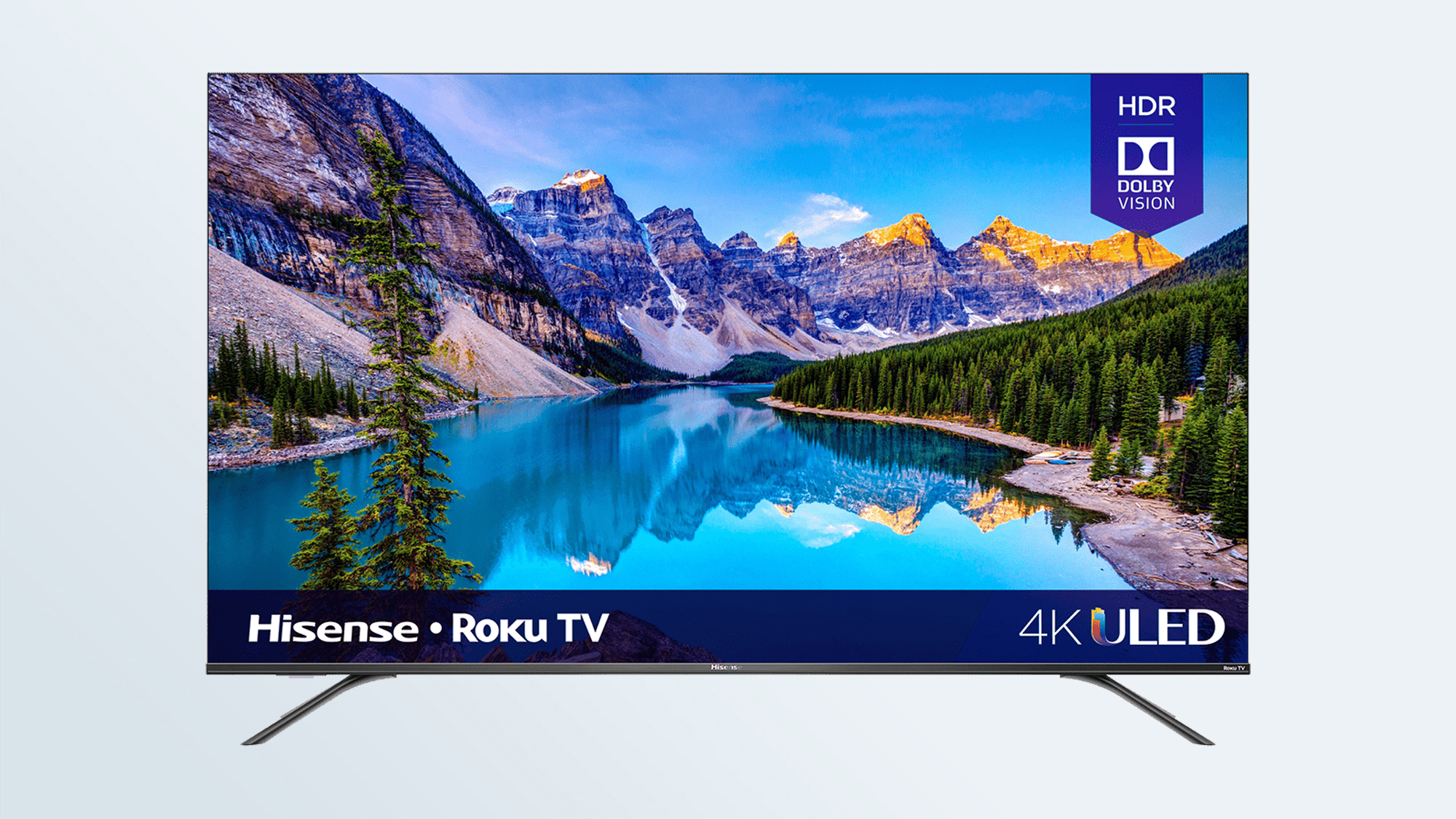
The picture on the R8F looks good under a variety of lighting conditions, and it helps that the screen can get decently bright. In our lab tests, we saw peak brightness ratings in the range of mid to upper 400 nits (depending on the mode) in normal mode and hovering around the set’s rated 700 nits for HDR. Aiding this are the TV’s 60 local dimming zones; only the outskirts of the two upper corners appeared unaccountably dark during our evaluation period.
The significant exception as far as image quality is excessive light bloom. This is readily visible in scenes from Avengers: Endgame and The Rise of Skywalker, where the searing light of the background sun tends to overwhelm darker details in the front of the frame. Luckily, it’s only distracting in these somewhat uncommon circumstances, and otherwise doesn’t detract from the picture.
Not all TVs are ideal for gaming; we typically recommend that a set’s input lag time (as measured in its Game mode, if any, with a Leo Bodnar Lag Tester) be 20 milliseconds or less if you want to use it for that. The R8F comes in at 17.7 milliseconds, making it a surprisingly impressive choice in this area, as well.
Hisense R8F Roku TV review: Audio
Considering how much even higher-end TVs can struggle to turn out killer sound, it’s no surprise that audio is often a notable sticking point for lower-end TVs. The R8F is no exception.
It certainly isn’t bad; its trebles and mids are emphatic enough, but its bass presence is lacking. In bass-forward tracks like The Knife’s “Silent Shout,” you get more the suggestion of a grounding thump than an essential part of the composition. This is most detectable at lower volume levels, and though it improves more as you edge up toward 50%, it still never dazzles.
Some distortion does creep into the upper limits of the set’s volume capacity, but the sound is acceptably clear for music, voices, and sound effects alike.
For a better audio experience than the Hisense R8F can provide on its own, we recommend pairing the set with one of our best soundbars. All of these produce richer, fuller sound, and some can take advantage of the R8F's Dolby Atmos support.
Hisense R8F Roku TV review: Smart TV features
Roku’s smart TV interface is a popular one among TV manufacturers, and one that you can master in no time. The starkly designed home screen presents a no-nonsense list of menu options on the left that let you watch live news and browse Fandango’s movie and TV stores. Through a table of large icons on the right you have quick access to your various connected devices and integrated apps (or channels) for watching content from the likes of Netflix, Amazon Prime Video, Hulu, and Disney+.
You can add more channels or apps from an in-depth catalog offering genres as diverse as music, games, comedy, news, and sports, but Roku TV, however broad, currently only goes so far. The recently launched HBO Max and Peacock TV streaming services are both noticeably absent from Roku’s stock of available channels, and there’s no clear word on when they may arrive.
With this many choices, you may not feel like navigating through all menus manually. No problem—you can use your voice. Just hold down the microphone button on the remote and say what you want to do. That's an unexpected, but not unwelcome, feature on a TV as inexpensive as this one in this price range. Most budget-friendly Roku TVs don't include the remote control microphone for voice search, and competing sets from Vizio, such as the Vizio M-Series Quantum (M658-G1), also lack voice interaction unless you pair the set with a separate smart speaker.
Hisense R8F Roku TV review: Remote control
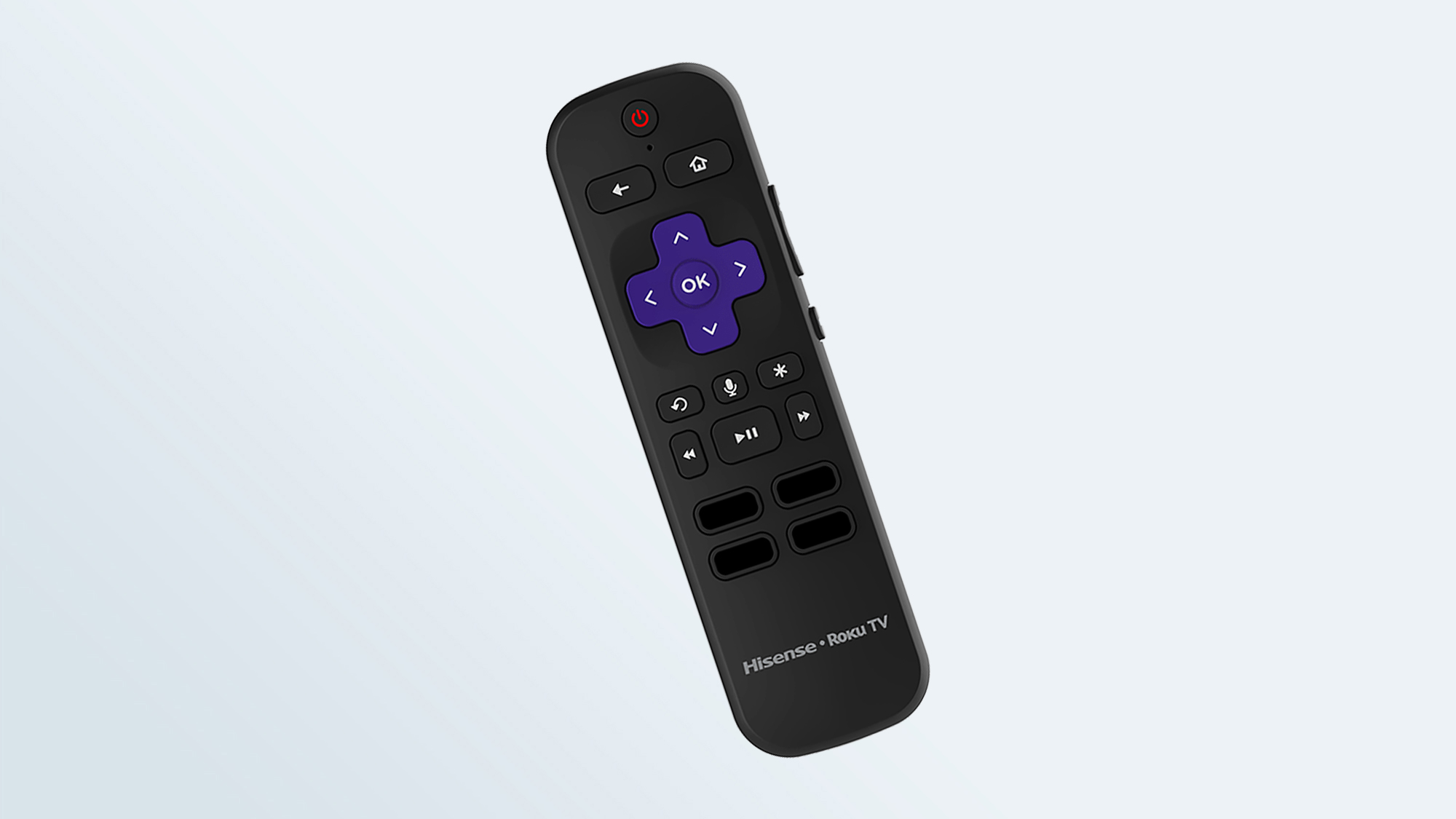
The no-frills remote is of the standard Roku style: small in size, rectangular with curved corners, and black with a few splashes of color. Dedicated buttons near the bottom open the Netflix, ESPN, Hulu, and Roku Channel apps with a single press; other simple navigation controls, as well as a microphone button for voice controls (see above), are located above it, and the volume controls are on the right side.
Hisense R8F Roku TV review: Verdict
For a basic TV, the Hisense R8F checks all the key boxes: affordable, good picture quality, and easy to use. You won’t get everything from it that you will with a more expensive set — more detailed perfection in terms of image quality, and sound that won’t have you scrambling for a soundbar — but you also won’t feel that anything substantial is missing. In fact, it's one of the best Roku TVs we've reviewed.
If you can afford to shell out a bit more cash, the Vizio M-Series Quantum (M658-G1) remains one of our highest recommendations. It gives you superior picture quality powered by quantum dot technology, half again as many dimming zones (a total of 90), improved audio, and more sophisticated smart functionality via SmartCast 3.0. But because it’s slightly cheaper and possesses some tantalizing characteristics, the Hisense R8F remains a definite winner in our book.
Matthew Murray is the head of testing for Future, coordinating and conducting product testing at Tom’s Guide and other Future publications. He has previously covered technology and performance arts for multiple publications, edited numerous books, and worked as a theatre critic for more than 16 years.
